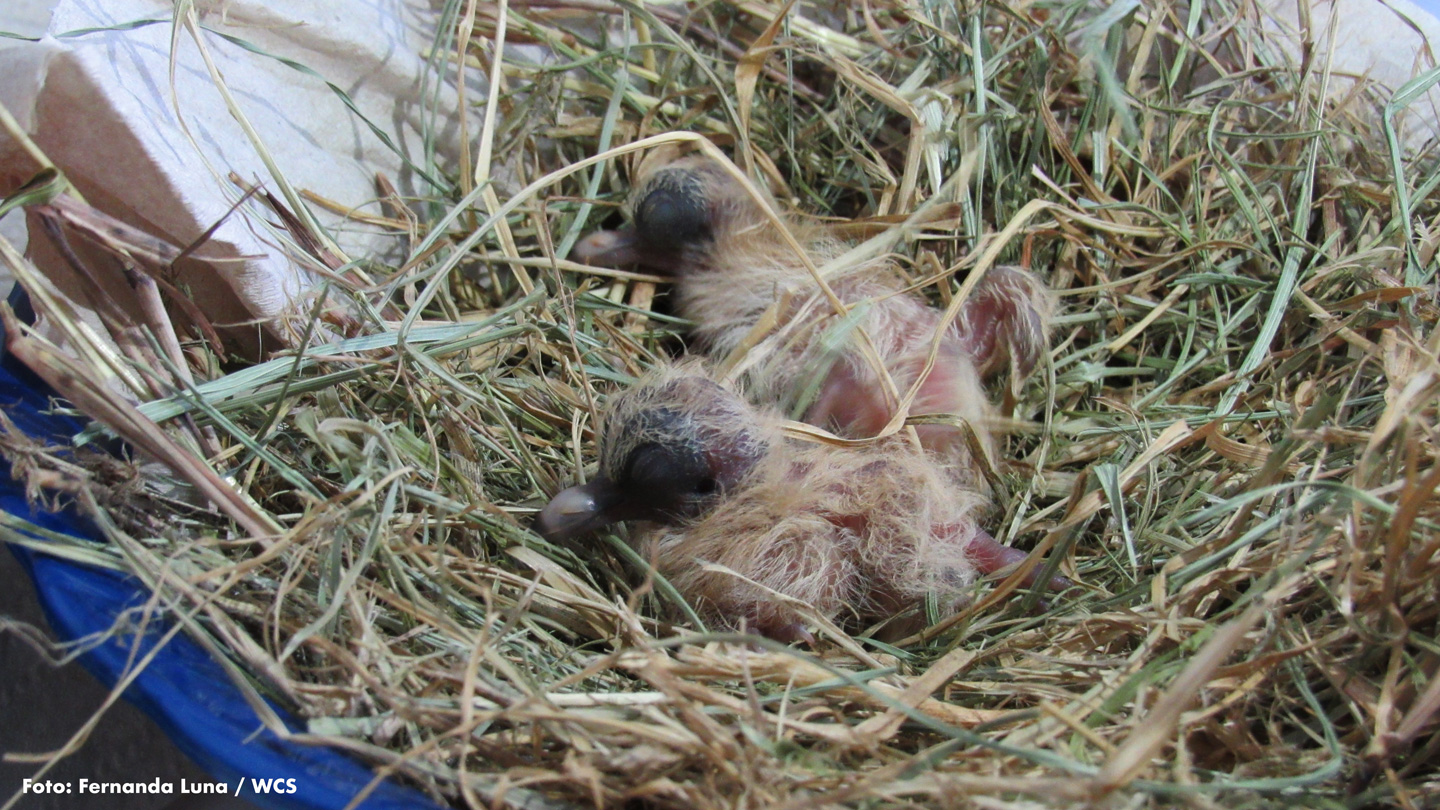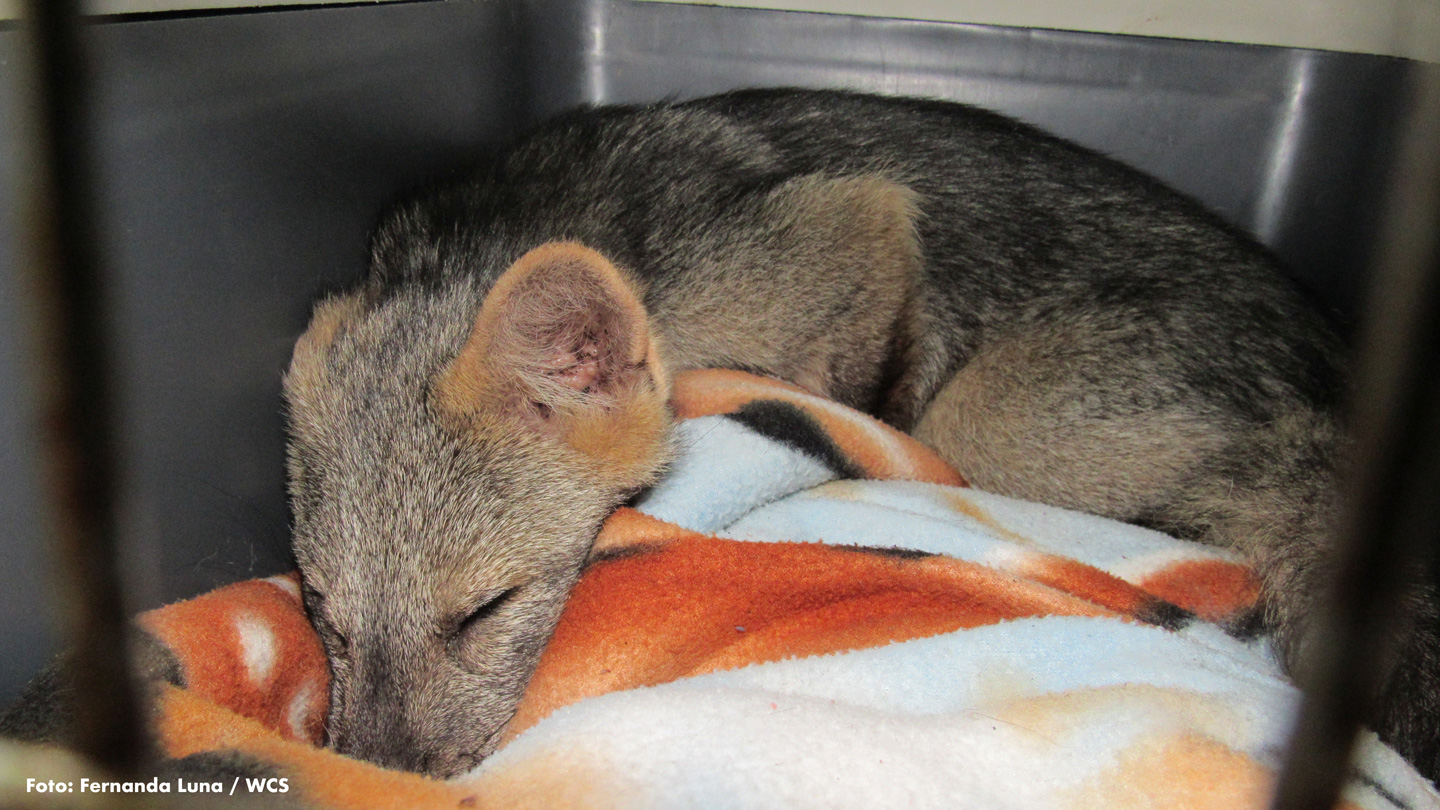Primates, birds, reptiles and other individuals of wild and exotic fauna, victims of wildlife trafficking and other events such as accidents, rescues or migration, have one of their last opportunities of survival in the Unidad de Rescate y Rehabilitación de Animales Silvestres URRAS (Unit of Rescue and Rehabilitation of Wild Animals), in its headquarters of the Universidad Nacional de Colombia (National University of Colombia). More than 100 individuals arrive there each month, many with few possibilities of returning to their habitats.

Spending a few hours at the Unidad de Rescate y Rehabilitación de Animales Silvestres (Unit of Rescue and Rehabilitation of Wild Animals) dozens of stories can be heard and these are not nice stories or stories that leave a teaching. On the opposite, these are unbelievable stories that confirm the damage that wildlife trafficking causes to species.
Some of them are told by Miguel Nova. “A few months ago, we received a primate, a white-faced capuchin (Cebus sp) that was kept as a pet, infested with fleas. And it did not have fangs; these were pulled out with pliers, a usual practice in the rural zones when someone wants to keep this type of animal as a pet.”
This monkey is still in URRAS, in rehabilitation process and, as Nova explains, it will not return to its habitat given that, having been a pet is an impediment for its return and integration with others of its species.
He also mentions the case of a tyrant hawk-eagle (Spizaetus tyrannus) which, as it was calculated, could have been in captivity by around six years. It arrived in March of last year, wounded by a shot. “This is a difficult case and with an ending that we would not want for any species. For now, it is still in rehabilitation but, due to its injuries, it will not be possible to return it to its habitat”, he explains. He remembers that this bird was one of five that arrived in only one week, all with firearm wounds.
Nova, veterinarian of the Universidad Nacional de Colombia, who works with URRAS, says that he and his fellow workers are doing their best to be able to return each mistreated individual they receive to its habitat. It is a battle against adversity in which absolutely everything possible is done to save each life. “We try everything, the university has all that is necessary, but we also accept reality when we know that an animal will not make it.”
19,000 animals in 25 years
URRAS, which is part of the Faculty of Veterinarian Medicine of the Universidad Nacional de Colombia, was created in the first years of the 90s, with a noble objective: to help wild birds, including their nests and chicks, which became defenseless due to the construction of civil engineering and infrastructure duties in the city that involved the felling of trees. This was its first service and it continues being one of its financial funds received from construction firms and joint ventures that send these animals to URRAS.

With time and the increase of wildlife trafficking, it began to receive other species. Its scope of action broadened and even expanded to the formation of veterinarian students in rehabilitation activities, a calling that implies dedication and persistence.
URRAS is not an isolated entity. It operates with authorization of the Secretaría Distrital de Ambiente SDA (Environmental Authority of Bogotá), supporting this organization in the reception and rehabilitation of wildlife species. Currently, it also works through an agreement with Corporación Autónoma Regional de Cundinamarca, CAR (Regional Environmental Authority of Cundinamarca), for the care, assessment and rehabilitation of animals that require veterinarian service of high complexity.This is another of its financial sources.
Disguised doctors
In URRAS, a day of work can begin at six in the morning or even earlier and can last for more than 12 continuous hours, during which the individuals are taken care of, are fed and, with luck, after very long processes that can last months or years, are released. Emergency surgeries, when they are required, and neonatal stimulation are also performed, all with the objective of preparing them for their return to liberty.
And there have been days when zootechnicians, biologists and veterinarians have had to disguise themselves to avoid attachment of the animals with humans. “Here we become their parents if it is necessary and for us the emotional burden is very strong when, after so much effort, the wounds of their captivity or capture prevent their return to their habitat or even their survival”, says Luisa Correa, another veterinarian of the rescue center.

Since its creation, URRAS has received some 19,000 individuals. Between four and six arrive daily, mainly mammals, reptiles and birds, more than 100 in a month. . However, during migration seasons, up to 50 animals can arrive in only 24 hours.
Currently, the Unit shelters approximately 130 wild animals, all in recovery process, which implies very high costs, depending mainly on the condition of each individual. In the case of animals that require surgeries, specialized tests, and an adequate diet, the recovery of only one individual can cost between 3 and 10 million pesos (1000 and 3000 USD). These costs are covered with the above mentioned funds from the construction companies and the CAR, plus what the Universidad Nacional de Colombia allots from its budget.
“The work of the different wildlife rehabilitation centers is vital, not only due to its contribution to the care and recovery of biodiversity, but because it is a thermometer that, in a certain way, measures the intensity of the wildlife trafficking situation”, explains Luz Dary Acevedo, coordinator in WCS Colombia of the Combating Wildlife Trafficking Program, funded by the European Union and the United States Government that works to reduce the impact of this problematic. .
URRAS does not stop, because the irregular purchase and sale of fauna and flora do not stop either, as Carlos Moreno, its coordinator, says. He insists that this is a crime against wildlife that is nourished from the lack of conscience of the people that want to have wild and exotic animals as pets and the traffickers. He informed that, in order to continue contributing to the rehabilitation and protection of the species, especially those that are victims of wildlife trafficking, the Faculty of Veterinarian Medicine of the Universidad Nacional de Colombia is initiating a technical and engineering project that includes the design of a new clinic for wild animals, which will have a highly refined recovery and release component.
“And we are progressing with this effort because, regretfully, we do not see a tendency towards a decrease in wildlife trafficking, regardless of the actions of environmental authorities and education programs. We know we are facing an increasing challenge.”
